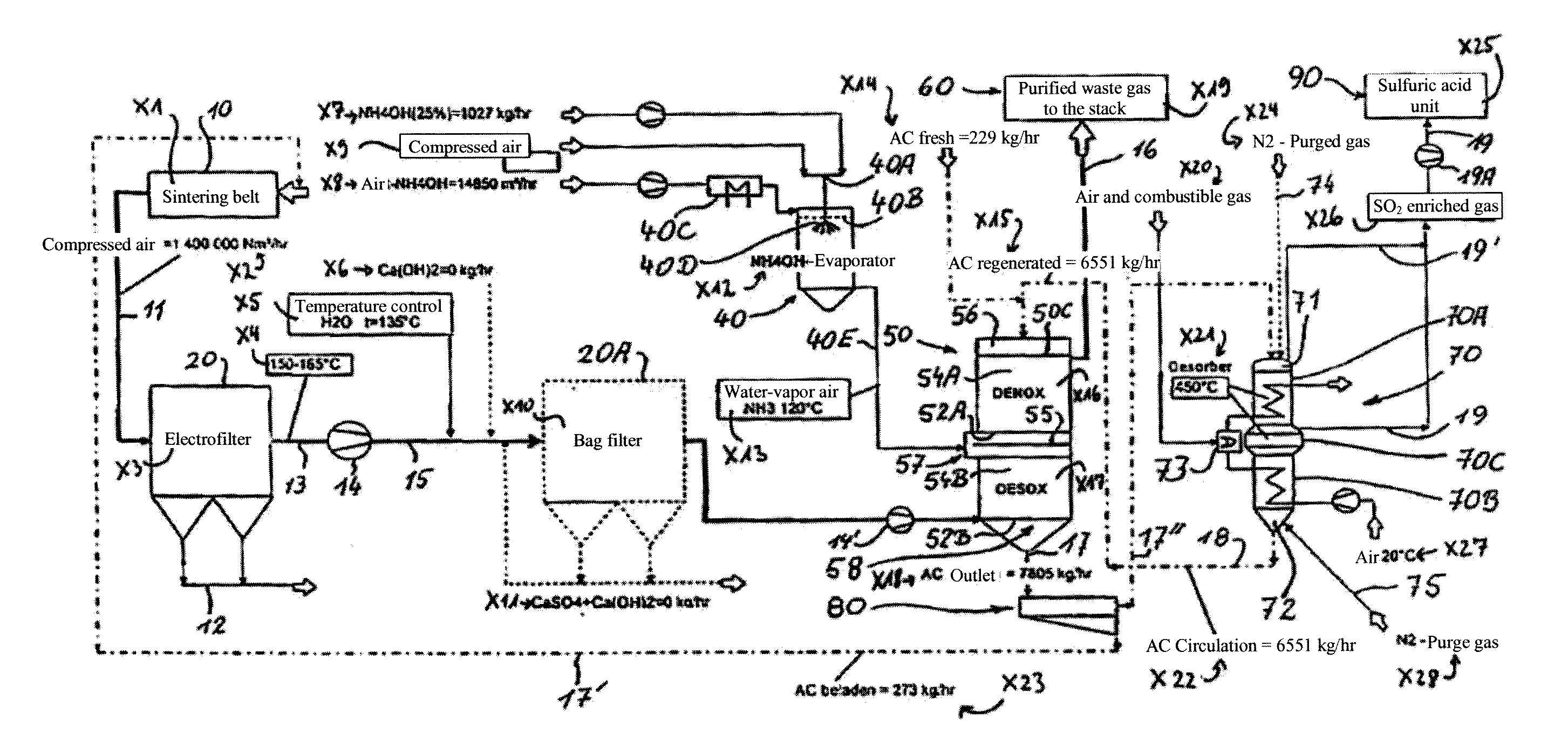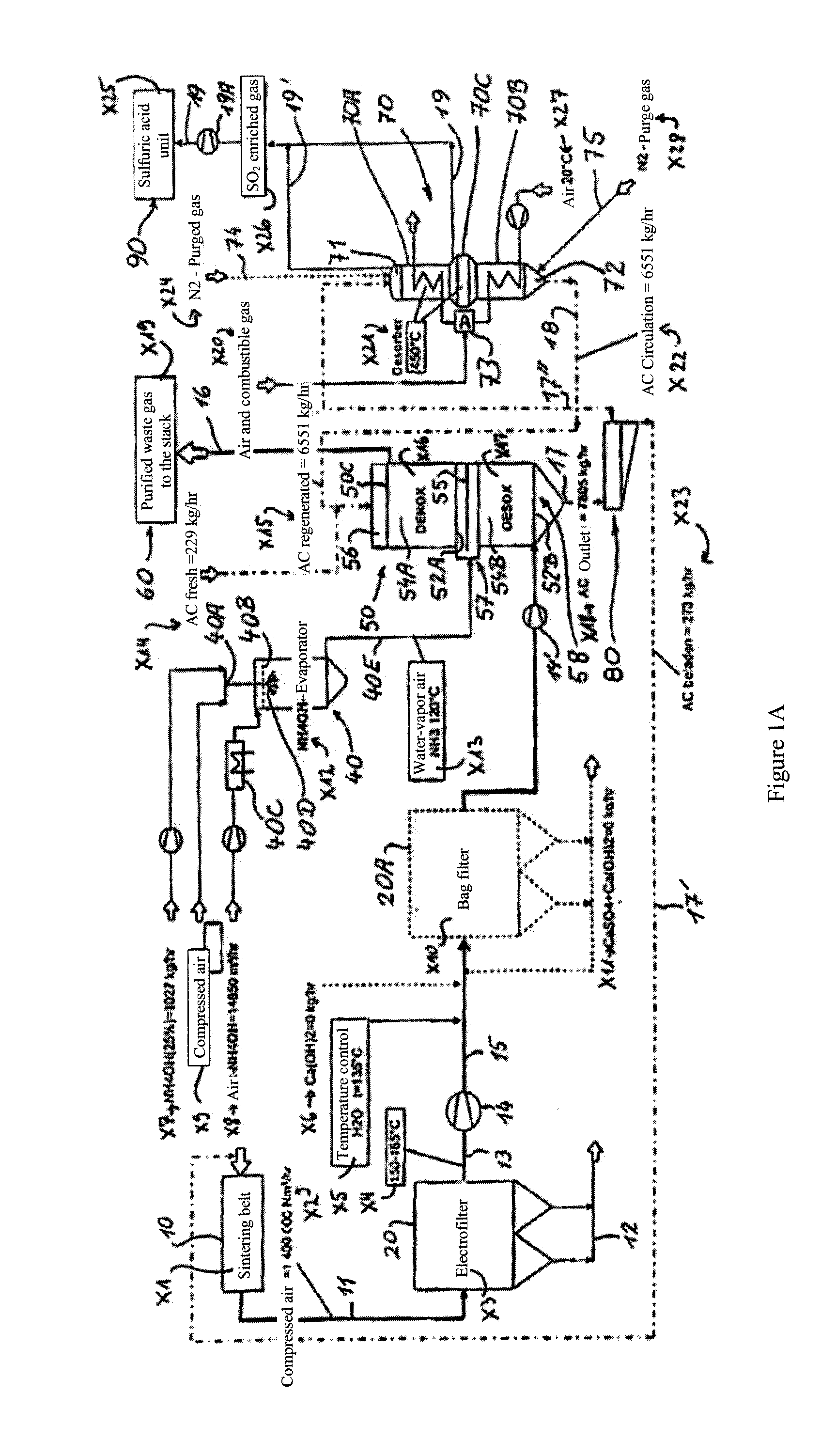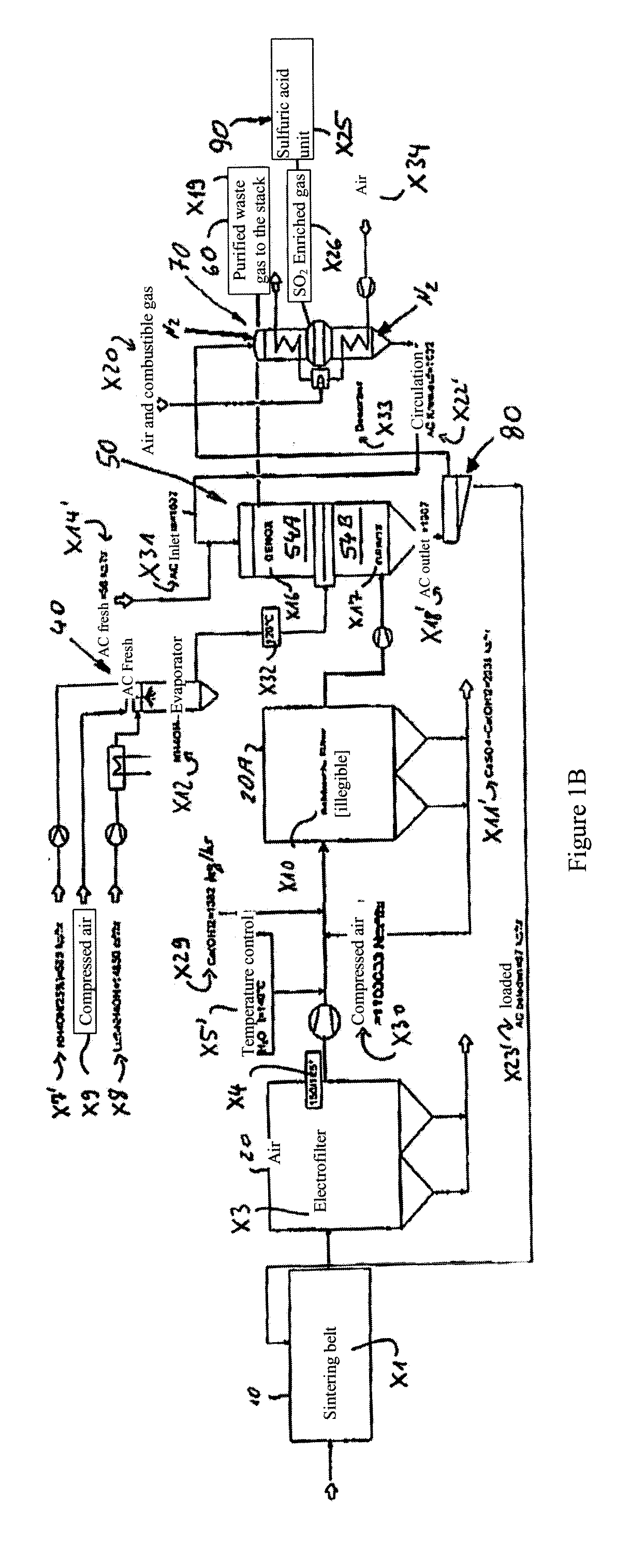Method and device for purifying the flue gases of a sintering process of ores and/or other material-containing materials in metal production
a technology of sintering process and flue gas, which is applied in the direction of engine components, solid separation, lighting and heating apparatus, etc., to achieve the effects of high degree of sox removal, simple method, and high burning of carbon used
- Summary
- Abstract
- Description
- Claims
- Application Information
AI Technical Summary
Benefits of technology
Problems solved by technology
Method used
Image
Examples
first embodiment example
[0038]In a first practical embodiment example, the operating conditions indicated in FIG. 1A are produced (without using a bag filter).
second embodiment example
[0039]In a second practical embodiment example, the operating conditions indicated in FIG. 1B are produced—when using a bag filter, but otherwise with the same setup as in FIG. 1A.
[0040]In the embodiment according to FIG. 1B, among other things, the active coke consumption, the active coke quantity to be regenerated, and the H2SO4 quantity to be produced are clearly lower than those in the embodiment example according to FIG. 1A.
[0041]As can be seen in FIG. 2, a moving bed reactor 50, in accordance with the invention, consists, in its simplest form, of a container 50A, which has a rectangular outline and is replenished with active coke at its upper end, which upper end is in a storage bin 56, lying above. From there, the active coke is supplied to an upper active coke layer 54A, via a bulk material distribution tray 50C, via bulk material-allotting tubes 50B, arranged in the form of a grid. This is done without blocking elements, so that a pure gravity filling is available, which is...
PUM
| Property | Measurement | Unit |
|---|---|---|
| particle size | aaaaa | aaaaa |
| particle size | aaaaa | aaaaa |
| particle size | aaaaa | aaaaa |
Abstract
Description
Claims
Application Information
 Login to View More
Login to View More - R&D
- Intellectual Property
- Life Sciences
- Materials
- Tech Scout
- Unparalleled Data Quality
- Higher Quality Content
- 60% Fewer Hallucinations
Browse by: Latest US Patents, China's latest patents, Technical Efficacy Thesaurus, Application Domain, Technology Topic, Popular Technical Reports.
© 2025 PatSnap. All rights reserved.Legal|Privacy policy|Modern Slavery Act Transparency Statement|Sitemap|About US| Contact US: help@patsnap.com



